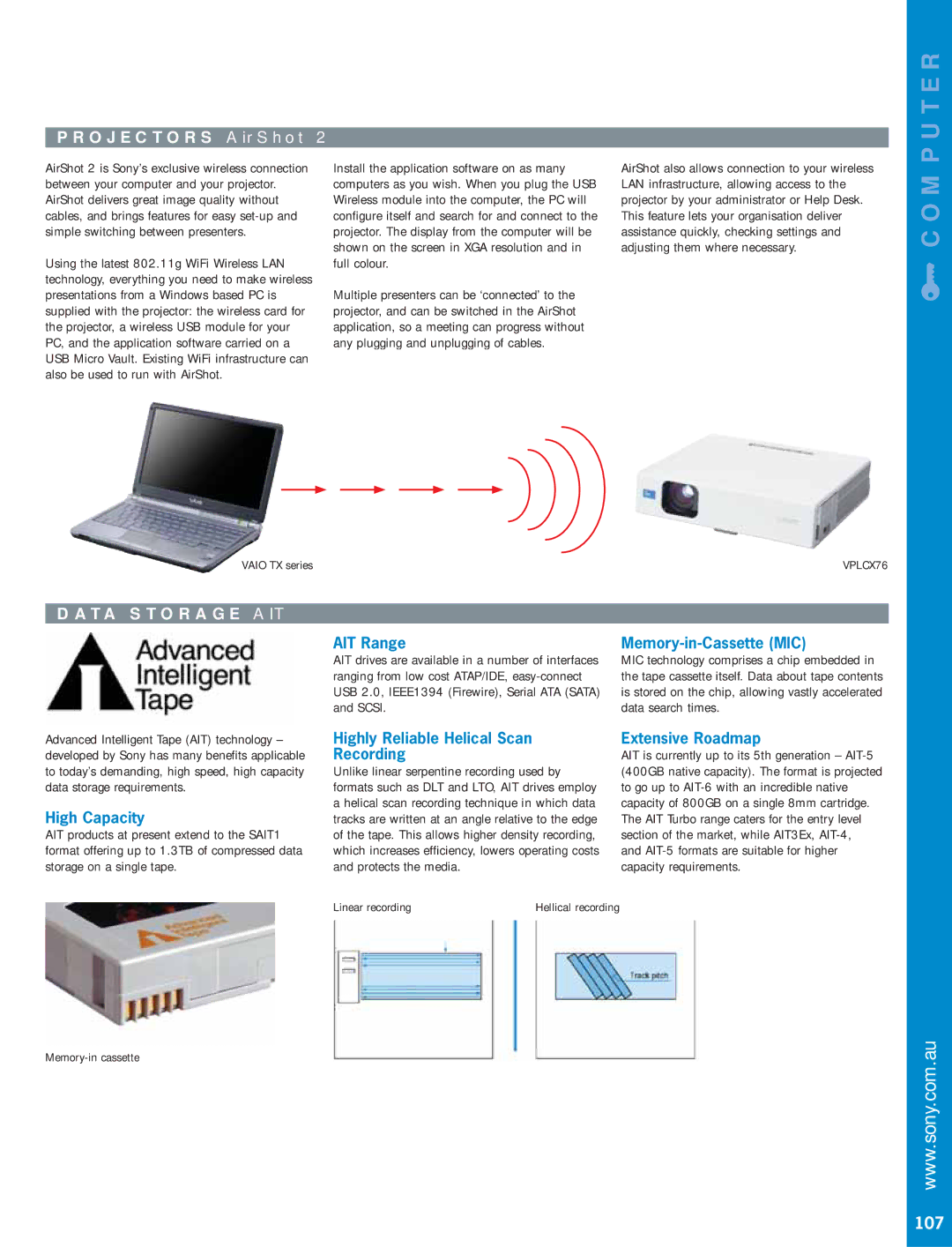
PROJECTORS AirShot 2
COMPUTER
AirShot 2 is Sony’s exclusive wireless connection between your computer and your projector. AirShot delivers great image quality without cables, and brings features for easy
Using the latest 802.11g WiFi Wireless LAN technology, everything you need to make wireless presentations from a Windows based PC is supplied with the projector: the wireless card for the projector, a wireless USB module for your PC, and the application software carried on a USB Micro Vault. Existing WiFi infrastructure can also be used to run with AirShot.
Install the application software on as many computers as you wish. When you plug the USB Wireless module into the computer, the PC will configure itself and search for and connect to the projector. The display from the computer will be shown on the screen in XGA resolution and in full colour.
Multiple presenters can be ‘connected’ to the projector, and can be switched in the AirShot application, so a meeting can progress without any plugging and unplugging of cables.
AirShot also allows connection to your wireless LAN infrastructure, allowing access to the projector by your administrator or Help Desk. This feature lets your organisation deliver assistance quickly, checking settings and adjusting them where necessary.
q
VAIO TX series | VPLCX76 |
DATA STORAGE AIT
AIT Range |
|
AIT drives are available in a number of interfaces | MIC technology comprises a chip embedded in |
ranging from low cost ATAP/IDE, | the tape cassette itself. Data about tape contents |
USB 2.0, IEEE1394 (Firewire), Serial ATA (SATA) | is stored on the chip, allowing vastly accelerated |
and SCSI. | data search times. |
Advanced Intelligent Tape (AIT) technology – developed by Sony has many benefits applicable to today’s demanding, high speed, high capacity data storage requirements.
High Capacity
AIT products at present extend to the SAIT1 format offering up to 1.3TB of compressed data storage on a single tape.
Highly Reliable Helical Scan
Recording
Unlike linear serpentine recording used by formats such as DLT and LTO, AIT drives employ a helical scan recording technique in which data tracks are written at an angle relative to the edge of the tape. This allows higher density recording, which increases efficiency, lowers operating costs and protects the media.
Extensive Roadmap
AIT is currently up to its 5th generation –
Linear recording | Hellical recording |
www.sony.com.au
